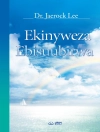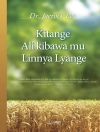Horses are not indigenous to India. They had to be imported, making them expensive and elite animals. How then did Indian villagers—who could not afford horses and often had never even seen a horse—create such wonderful horse stories and brilliant visual images of horses? In Winged Stallions and Wicked Mares, Wendy Doniger, called ‘the greatest living mythologist, ‘ examines the horse’s significance throughout Indian history from the arrival of the Indo-Europeans, followed by the people who became the Mughals (who imported Arabian horses) and the British (who imported thoroughbreds and Walers). Along the way, we encounter the tensions between Hindu stallion and Arab mare traditions, the imposition of European standards on Indian breeds, the reasons why men ride mares to weddings, the motivations for murdering Dalits who ride horses, and the enduring myth of foreign horses who emerge from the ocean to fertilize native mares.
Table des matières
List of Illustrations
Preface
Acknowledgments
A Note on Translation
1. Horses in Indian Nature and Culture
2. Horses in the Indo-European World but Not in the Indus Valley, 3000 to 1500 BCE
3. Horses in the Vedas, 1500 to 500 BCE
4. Horses and Snakes in the Underworld in the Mahabharata and Ramayana, 300 BCE to 300 CE
5. Horses in the Ocean in the Sanskrit Puranas, 400 to 1400 CE
6. Ashvashastra, the Science of Horses, 200 BCE to 1200 CE
7. Buddhist Horses, 500 BCE to 500 CE
8. Arabian Horses and Muslim Horsemen, 500 to 1800 CE
9. Equestrian Epics and Mythic Mares, 600 to 2000 CE
10. Horses of the British Raj, 1700 to 1900 CE
11. Horse Myths and Rituals in the Absence of Horses, 1800 to 2000 CE
12. Horses in Modern India, 1900 to 2020 CE
13. The Gift Horse
Notes
Bibliography
Index
A propos de l’auteur
Wendy Doniger is Mircea Eliade Distinguished Service Professor Emerita of the History of Religions at the University of Chicago and author of more than forty books, including The Hindus: An Alternative History.







![Couverture du Brian Schrag & Julisa Rowe: Community Arts for God's Purposes [Chinese] 貼近神心意的社群藝術 Couverture du Brian Schrag & Julisa Rowe: Community Arts for God's Purposes [Chinese] 貼近神心意的社群藝術](https://static.worldofdigitals.com/thumb_webp/740/9781645083740.webp)




